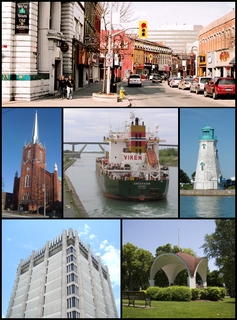
St. Catharines is the largest city in Canada's Niagara Region and the sixth largest urban area in the province of Ontario. As of 2016, it has an area of 96.13 square kilometres (37.12 sq mi), 133,113 residents, and a metropolitan population of 406,074. It lies in Southern Ontario, 51 kilometres (32 mi) south of Toronto across Lake Ontario, and is 19 kilometres (12 mi) inland from the international boundary with the United States along the Niagara River. It is the northern entrance of the Welland Canal. Residents of St. Catharines are known as St. Cathariners. St. Catharines carries the official nickname "The Garden City" due to its 1,000 acres (4 km2) of parks, gardens, and trails.

Welland is a city in the Regional Municipality of Niagara in Southern Ontario, Canada. In 2016, it had a population of 52,293.
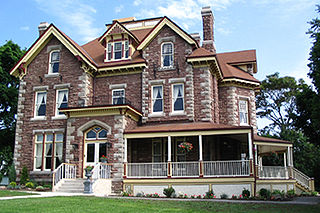
Thorold is a city in Ontario, Canada, located on the Niagara Escarpment. It is also the seat of the Regional Municipality of Niagara.

The Welland Canal is a ship canal in Ontario, Canada, connecting Lake Ontario and Lake Erie. It forms a key section of the St. Lawrence Seaway and Great Lakes Waterway. Traversing the Niagara Peninsula from Port Weller in St. Catharines to Port Colborne, it enables ships to ascend and descend the Niagara Escarpment and bypass Niagara Falls. It is the fourth canal connecting these waterways; three smaller predecessors also bore the same name.

The Regional Municipality of Niagara, also colloquially known as the Niagara Region or Region of Niagara, is a regional municipality comprising twelve municipalities of Southern Ontario, Canada. The regional seat is in Thorold. It is the southern end of the Golden Horseshoe, the largest megalopolis in Canada.

King's Highway 406, commonly referred to as Highway 406, is a 400-series highway in the Canadian province of Ontario. The primary north-south route through the central portion of the Niagara Peninsula, Highway 406 connects Welland, Thorold and downtown St. Catharines to the Queen Elizabeth Way (QEW).

St. Catharines is a federal electoral district in the Niagara Region of Ontario, Canada, that has been represented in the House of Commons of Canada since 1968.

Niagara Centre is a federal electoral district in the Niagara Region of Ontario that has been represented in the House of Commons of Canada from 1867 to 1988 and since 1997.
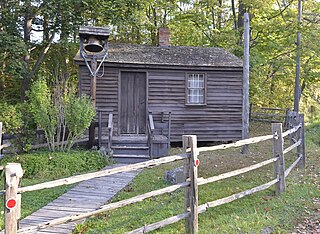
St. Johns is an unincorporated rural community in Thorold, Niagara Region, Ontario, Canada.
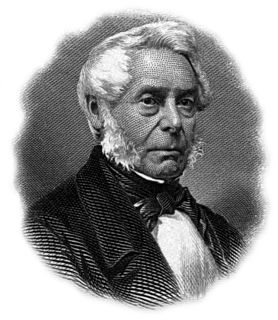
William Hamilton Merritt was a businessman and politician in the Niagara Peninsula of Upper Canada in the early 19th century. Although he was born in the United States, his family was Loyalist and eventually settled in Upper Canada. Merritt fought in the War of 1812, was captured by the invading American forces, and held as a prisoner of war. After the war, he returned to the Niagara region and began a career in business. He was one of the founders of the Welland Canal.

The Welland Canal has gone through many incarnations in its history. Today, five distinct canal-construction efforts are recognized. The retronym First Welland Canal is applied to the original canal, constructed from 1824 to 1829 and 1831 to 1833.

The coat of arms of Vancouver was granted by the College of Arms on 31 March 1969.

The Corporate Logo of the City of Sydney was adopted by the City Council on 24 June 1996. It includes a graphic artist's "version" of parts of the actual arms.
Port Weller Dry Docks was a shipbuilder located on the Welland Canal at the Lake Ontario entrance. The shipbuilder was founded in 1946 and the site was initially owned by the Government of Canada for storage purchases. The shipyard expanded to include ship repair, and reconstruction work. In 1956, the drydock was sold to the Upper Lakes Shipping Company, which began the construction of vessels at the site. The shipyard twice went insolvent, most recently in 2015. Port Weller Dry Docks was used to build, refit and repair cargo vessels.
Twelve Mile Creek is a waterway located on the Niagara Peninsula in the Regional Municipality of Niagara in Southern Ontario, Canada. Its headwaters are located in the town of Pelham, encompassing some of the most unspoiled and natural areas of Niagara area. The creek's lower reaches flow through urban areas of Thorold and St. Catharines, and have been heavily altered by human activity for almost two centuries. The creek was first known as "Ashquasing" by the Mississaugas Indigenous people, the name meaning "that which lies at the end" in the Anishinaabe language.

Icelandic heraldry is the study of coats of arms and other insignia used in Iceland. It belongs to the German-Nordic heraldic tradition, as the heraldry of Iceland has been primarily influenced by the heraldic traditions of Norway, Denmark and other Nordic countries. Iceland does not have a strong sense of heraldic tradition, however, because the country lacks a governing body to oversee this. As a result, coats of arms registered as such are virtually nonexistent in modern Iceland. While many municipalities use more or less heraldic logos, there are no heraldic standards to which these must adhere, and they are registered as graphic designs rather than as coats of arms.
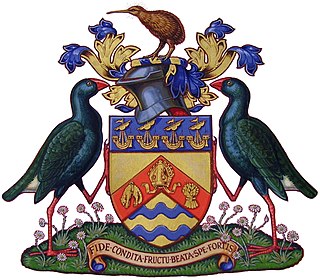
The Coat of Arms of the City of Christchurch, also known as the armorial bearings, is the official symbol of the City of Christchurch, New Zealand. They were granted to the City by the College of Arms by Letters Patent on February 21, 1949.

Pineglen was a bulk carrier owned and operated by Canada Steamship Lines. She was built at the Collingwood Shipyards, in Collingwood, Ontario in 1985, to a single superstructure lake freighter design. Initially named Paterson, the vessel was sold to Canada Steamship Lines in 2002 and renamed. Unlike more modern lake freighters she was built to a "straight-deck" design – i.e. she was not equipped with a self-unloading boom. The vessel was sold for scrap in 2017.
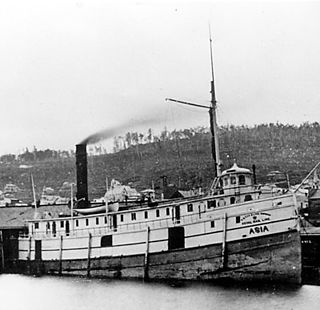
The SS Asia was a Canadian passenger steamship and package freighter of the Northwestern Transportation Company. She was 41.5 m (136 ft) long and had a beam of 7.11 m (23.3 ft). Launched at St. Catharines, Ontario in 1873, she was built as a canaller, a vessel designed for use in the Welland Canal and other enclosed watercourses of the day. She was converted by her owners for services in the open Great Lakes. Heavily laden and top-heavy with freight, she sank near Lonely Island in Georgian Bay on 14 September 1882 with a loss of 123 lives. The doomed vessel had been fitted with flimsy lifeboats, which repeatedly overturned in the heavy waters. A lifeboat that had originally saved 18 officers and passengers from the foundering Asia then capsized over and over in storm conditions, leading to the deaths of most of the castaways. By the time the one remaining lifeboat made land near Parry Sound, only two passengers remained alive.

The Trillium class is a series of freighters owned by Canada Steamship Lines (CSL). The class is divided into three subclasses; the self-discharging lake freighters, the lake bulk carriers, and the Panamax self-discharging bulk carriers. Initially a nine-ship building program, six are operated by Canada Steamship Lines for use on the Great Lakes, while three are operated by CSL Americas for international trade. Two more ships were acquired later for use by CSL Americas.



















